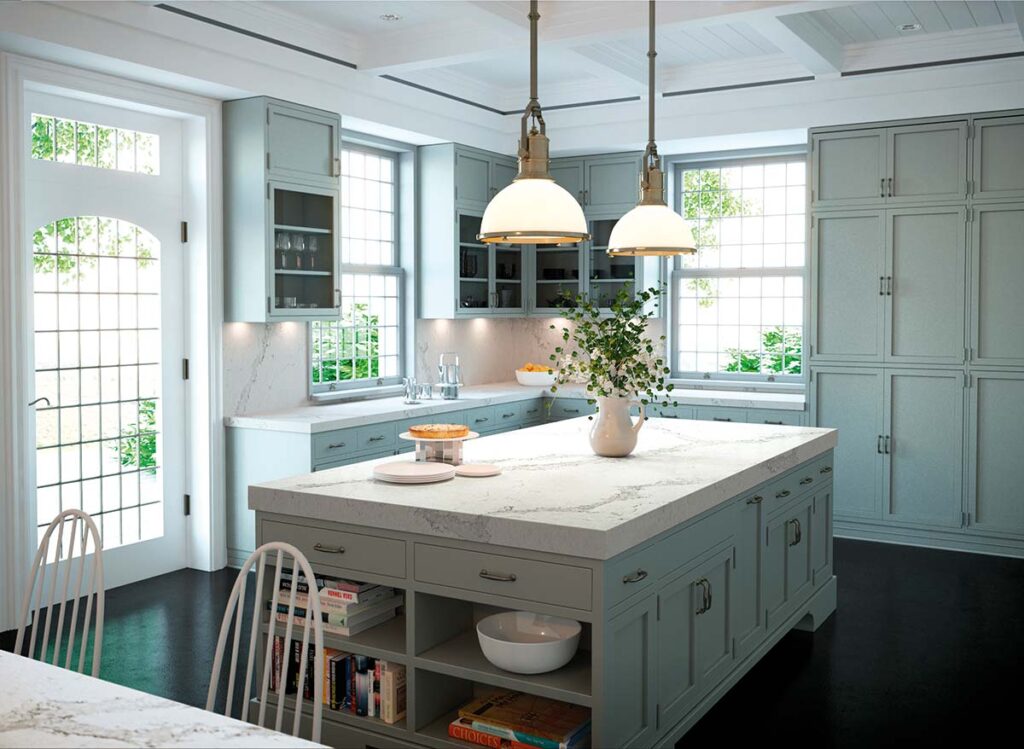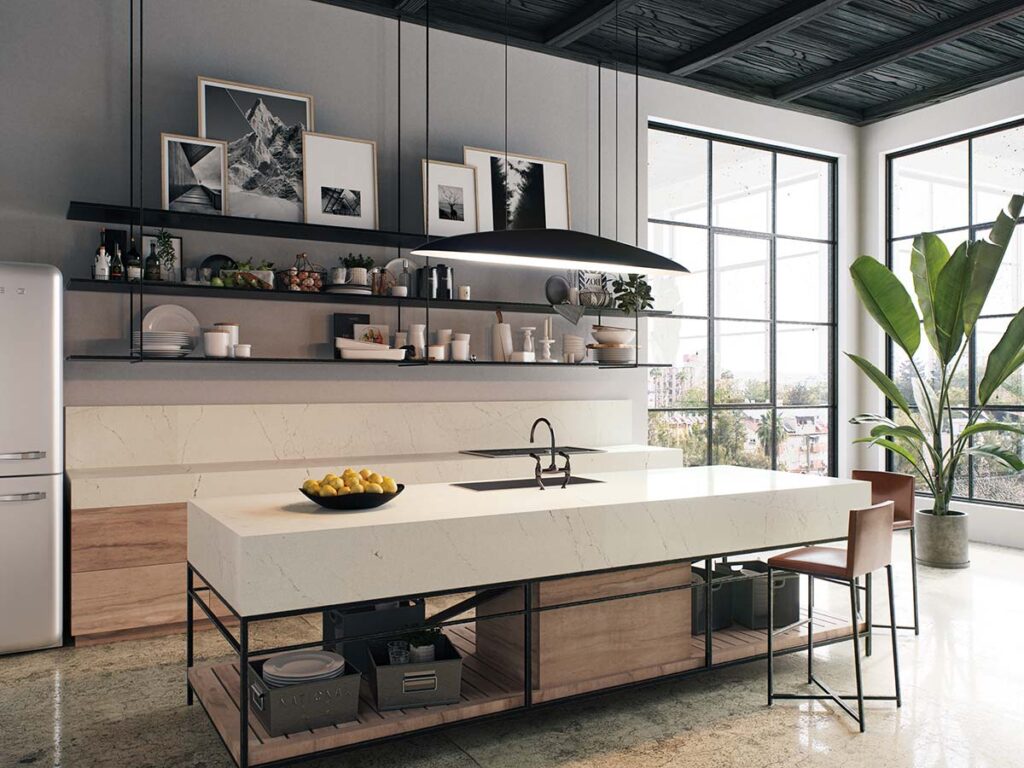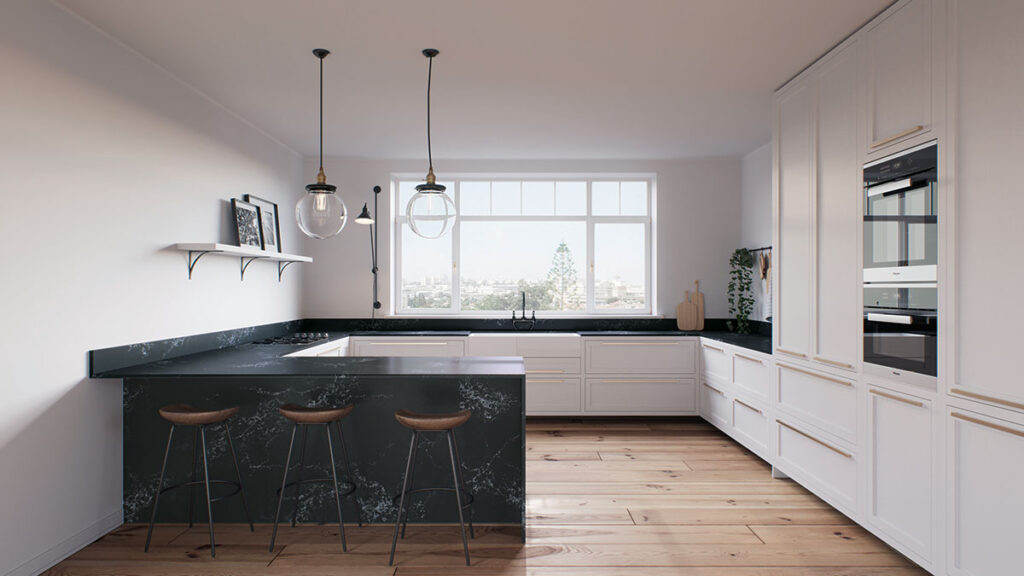How to organize your kitchen cabinets: 10 key tips
5 min read
Cabinets are one of the most noticeable design elements of any kitchen space. When paired well with a premium countertop, like a Caesarstone quartz, a kitchen can easily become the most stunning room of the house.
But what happens when your cabinets get untidy and clutter begins encroaching upon the counterspace? When it becomes difficult to find what you’re looking for, it’s time to reorganize.
Read on for tips on the best way to organize kitchen cabinets and get to enjoying your kitchen once again.

Wondering how to organize the kitchen cabinets and where to start?
An organized kitchen cabinet can never be achieved if constant clutter is the issue. Extra storage space may be desired and, in some cases, extra storage space may in fact be the answer. However, if not decluttered first, even the new cabinets will not be fully right after installation. And the underlying problem will not have been solved.
Start with a box for the items that can be donated or sold and a trash bin for items that can no longer be used. You will be surprised by how many expired cans and spices you may be harbouring inside the cabinets. Take everything out of the cabinets and sort one by one. Be keen on checking best before dates.
The best way to organize kitchen cabinets is to categorize all items once sorting is completed. For instance, categorize the items into food items and cookware and utensils. You can further subdivide the items into simpler categories. Food items can be subdivided into snacks, spices, baking items, canned goods and dry foods. Cookware can be subdivided into glasses, mugs, plates, spoons, knives, pots, pans and bowls. This makes it easy to spot and pick exactly what is needed without disorganizing the rest.
Containers save lots of cabinet space as opposed to storing products with their original packaging. However, if not labelled, you can make unfortunate mistakes. Ensure all storage bins and containers are labelled (with names and best before dates) before safely storing the contents.

The clutter has been removed and replaced only with the essentials. Now, each category must be assigned to a specific cupboard. A tip for this is to store the items that are most often used nearby. For instance, spices, coffee and sugar should be readily available when needed. Items that are used once a month or less can be placed further away. This approach also works for utensils and dinnerware.
Not every item needs to be stored in the cabinets. Some of your favourite kitchenware can be displayed on the countertop as a décor piece, or for easier retrieval. For example, in a modern farmhouse kitchen, rustic jars would make the perfect addition to a quartz countertop like Caesarstone’s 5131 Calacatta Nuvo.
Also, consider what is safe in the lower cabinets compared to the upper ones. In the upper cabinets, store dishes, glasses and food, for easy retrieval. The lower cabinets are best for storing small appliances, pots, cutting boards and cleaning supplies.
Pop-up shelves are essential for adding extra storage space to the cabinets or your Caesarstone quartz countertop. They are the best low-budget option for extra storage without installing more cabinets. They can be used to hold anything, from packaged foods to dishes and even fruits.
As well, if homeowners have leftover Caesarstone quartz from their countertop, they can turn it into beautiful open shelving in colours like 5112 Aterra Blanca or 5101 Empira Black.
Spices can take up a lot of space in the cabinet. And most times, they are the culprits for cabinet disorganization. To eliminate this problem, create a spice drawer in one of the lower cabinets. This way, it will be easier to pick the spice you need as opposed to rummaging through the entire spice cabinet just to find the ginger.
You may have done a great job organizing the utensils. However, if you do not divide the utensils, they will not remain organized. Someone may even get hurt by a knife while searching for a fork. If you cannot find a standard organizer that can fit the drawer, look for custom or adjustable dividers that will hold everything in the right place.

If you have children running around, it would be wise to dedicate a bottom drawer to store their essentials. Ensure the children can reach the cabinet without difficulties. This can also prevent the plastic cups and bowls from clashing with other heavy kitchenware.
Organized cabinetry can provide a sense of relief. Especially if all the items are clearly labelled and uniform. Uniformity can be achieved by using the same size containers or containers that stack and are the same colour.
Organizing a cabinet is a lot of work and no one wants to waste a few hours every week re-organizing. Once the cabinets are organized, ensure everyone knows to return each item to the place they found it. Always place the items with the labels facing out so you do not have to take out the container to read the label.
Though it can be a big job, learning how to organize the kitchen cupboards will increase the beauty, efficiency and functionality of your space. Once the initial process is complete, give yourself the gift of maintaining it.
{{ subtitle }}
{{ i.desc }}
{{ subtitle }}
{{ subtitle }}